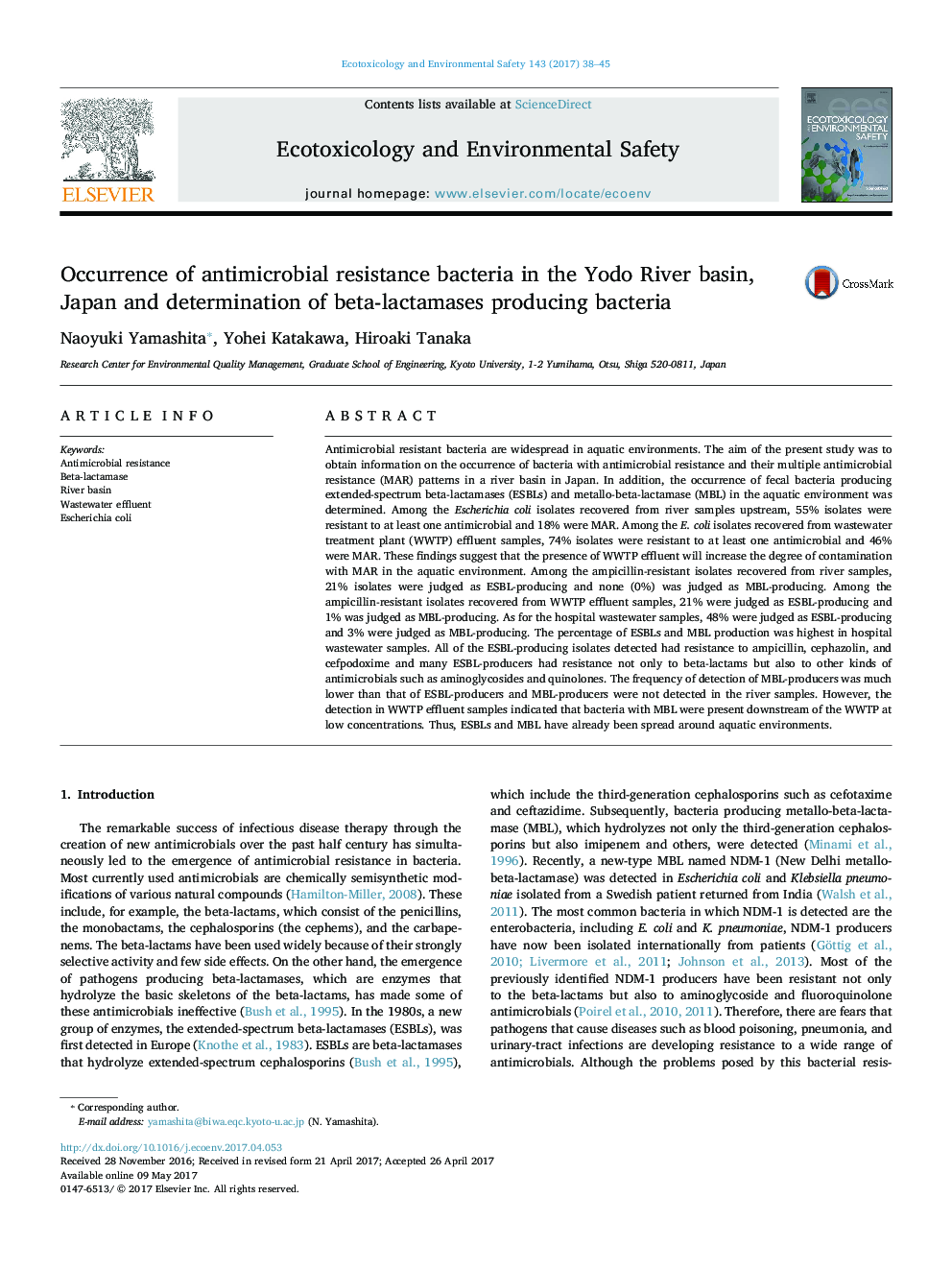| کد مقاله | کد نشریه | سال انتشار | مقاله انگلیسی | نسخه تمام متن |
|---|---|---|---|---|
| 5747576 | 1618921 | 2017 | 8 صفحه PDF | دانلود رایگان |
- Wastewater samples had greater percentages of resistant bacteria than river samples.
- Bacteria in wastewater samples showed high multiple antimicrobial resistance.
- ESBL-producing bacteria were detected from river and wastewater samples.
- ESBL-producing bacteria were resistant not only to beta-lactams but to quinolones.
- Few MBL-producing bacteria were detected from wastewater samples.
Antimicrobial resistant bacteria are widespread in aquatic environments. The aim of the present study was to obtain information on the occurrence of bacteria with antimicrobial resistance and their multiple antimicrobial resistance (MAR) patterns in a river basin in Japan. In addition, the occurrence of fecal bacteria producing extended-spectrum beta-lactamases (ESBLs) and metallo-beta-lactamase (MBL) in the aquatic environment was determined. Among the Escherichia coli isolates recovered from river samples upstream, 55% isolates were resistant to at least one antimicrobial and 18% were MAR. Among the E. coli isolates recovered from wastewater treatment plant (WWTP) effluent samples, 74% isolates were resistant to at least one antimicrobial and 46% were MAR. These findings suggest that the presence of WWTP effluent will increase the degree of contamination with MAR in the aquatic environment. Among the ampicillin-resistant isolates recovered from river samples, 21% isolates were judged as ESBL-producing and none (0%) was judged as MBL-producing. Among the ampicillin-resistant isolates recovered from WWTP effluent samples, 21% were judged as ESBL-producing and 1% was judged as MBL-producing. As for the hospital wastewater samples, 48% were judged as ESBL-producing and 3% were judged as MBL-producing. The percentage of ESBLs and MBL production was highest in hospital wastewater samples. All of the ESBL-producing isolates detected had resistance to ampicillin, cephazolin, and cefpodoxime and many ESBL-producers had resistance not only to beta-lactams but also to other kinds of antimicrobials such as aminoglycosides and quinolones. The frequency of detection of MBL-producers was much lower than that of ESBL-producers and MBL-producers were not detected in the river samples. However, the detection in WWTP effluent samples indicated that bacteria with MBL were present downstream of the WWTP at low concentrations. Thus, ESBLs and MBL have already been spread around aquatic environments.
Journal: Ecotoxicology and Environmental Safety - Volume 143, September 2017, Pages 38-45
